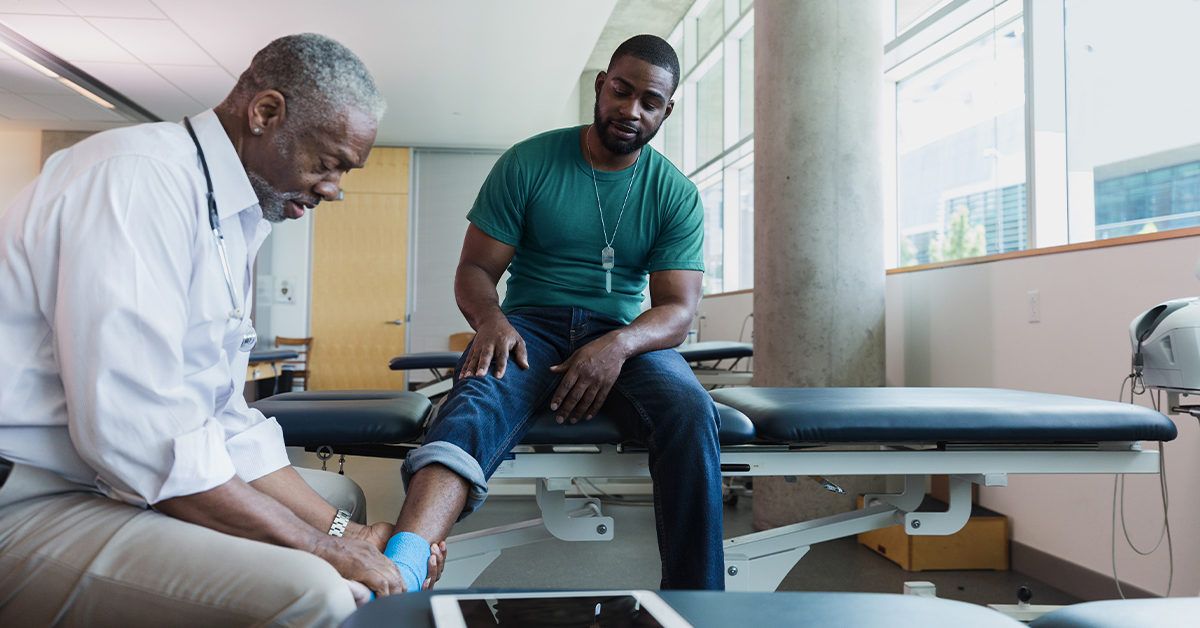Fascination About Axis Spine And Orthopedics
Fascination About Axis Spine And Orthopedics
Blog Article
Axis Spine And Orthopedics - Truths
Table of ContentsNot known Facts About Axis Spine And OrthopedicsAxis Spine And Orthopedics Things To Know Before You BuyThe Buzz on Axis Spine And OrthopedicsThe Ultimate Guide To Axis Spine And Orthopedics
An orthopedic doctor is a physician who specializes in treating issues of the bones, joints, and connective cells, and guaranteeing you maintain a healthy and balanced bone and joint system., we have actually very certified orthopedic cosmetic surgeons that are capable of dealing with clients of all ages. I got entailed in research throughout my first year of clinical institution, and I began making connections with orthopedic doctors early on.
Talk about the post-operative care plan with your cosmetic surgeon. Organize for transport to and from the healthcare facility on the day of surgical procedure.
The 9-Minute Rule for Axis Spine And Orthopedics

Your physician will offer plenty of information relating to post-operative treatment, consisting of how to stay tidy and keep the surgical area clean. Following these pointers can prepare you physically and psychologically for your orthopedic surgery. Bear in mind to preserve a favorable expectation and trust fund your clinical group's know-how, adding to a smoother recuperation procedure.

No one expects you to know anything, so do not try to remember a number of random realities. Otherwise, joint pain can really mess up your life.
Common problems treated by orthopedic cosmetic surgeons are: Cracks and Bone Injury: Broken bones and various other injuries from accidents or impacts. Bone Cancer: Growths in the bones. Orthopedic Injury: Extreme injuries affecting bones, joints, or soft tissues.
Orthopedic doctors carry out a range of procedures to help individuals with musculoskeletal concerns. Apart from these subspecialists, some orthopedic specialists are generalists. Training might consist of conventional clinical institution (a medical professional of medicine level, or MD)or osteopathic education and learning (a doctor of osteopathy degree, or DO) - axis spine.
The Main Principles Of Axis Spine And Orthopedics
Next, they finish an orthopedic residency. It's usually 5 years and provides hands-on understanding in a clinical setting. Appointments commonly include: Reviewing your symptoms, clinical background and way of living.
Treatment referrals. Some conditions require added imaging, like a CT check or MRI for more comprehensive views of the agonizing location. Your orthopedist will advise therapies to minimize signs and symptoms until you get a medical diagnosis. Orthopedic surgeons focus on nonsurgical and medical strategies. For sure kinds of orthopedic trauma or congenital problems, surgical treatment is often the initial line of treatment. check this site out For the majority of other problems, orthopedists attempt nonsurgical therapiesfirst. It might take even more than one type of treatment to achieve enduring relief. Choosing the right is essential for effective medical results and boosted patient recuperation. With a variety of choices offered out there, it can be frustrating for both doctors and people to make an educated decision. The top 5 factors to consider when picking an orthopedic dental implant are surgical compatibility, cost-effectiveness, considerations for alteration surgical procedure, patient-specific variables, and the design and technology of the dental implant. They come in numerous forms, sizes, and materials, each offering a certain objective based on the patient's requirements. Recognizing the fundamentals of orthopedic implants is vital before diving into the decision-making procedure. One of the leading factors to consider when picking an orthopedic implant is its compatibility with the medical treatment. Various implants are created for different surgical methods and techniques. The orthopedic dental implant ought to be specifically designed to fit the person's anatomy and ensure stability throughout the recovery procedure. Surgical compatibility involves variables such as dental implant size, shape, and product. The success of orthopedic treatments relies heavily on the correct option and positioning of implants that work with the person's anatomy and case history. By focusing on individual safety and security and health, orthopedic doctors can attain successful end results and provide the finest quality of like their individuals. Surgeons have to meticulously consider the biomechanical buildings of the dental implant and how it will integrate with the individual's bone structure. This will certainly add to much better medical results, decreased issues, and much shorter recovery time. When choosing implants for a client, it is necessary to take into consideration a variety of patient-specific factors that can influence the success and outcome of the treatment. These variables incorporate the patient's age, bone top quality and amount, dental health condition, case history, way of life routines, and visual choices. For older clients with jeopardized bone thickness, shorter implants or grafting procedures might be useful to offer the needed stability and support. 3. Is the size of the orthopedic dental implant a crucial factor to consider? How does it influence the surgical procedure and the client's healing? Yes, the size of the dental implant is crucial as it has to match the patient's structure for appropriate fit and capability. 4. Can the individual's age and way of life play a duty in selecting one of the most appropriate orthopedic dental implant? Definitely. Just how does the expense of an orthopedic dental implant aspect into the decision-making process, and exist means to stabilize high quality with cost? The expense of the implant is a crucial factor to consider, yet it ought to not be the sole determining factor. Stabilizing quality with affordability involves evaluating various implant options 'long-term advantages and prospective problems. Report this page